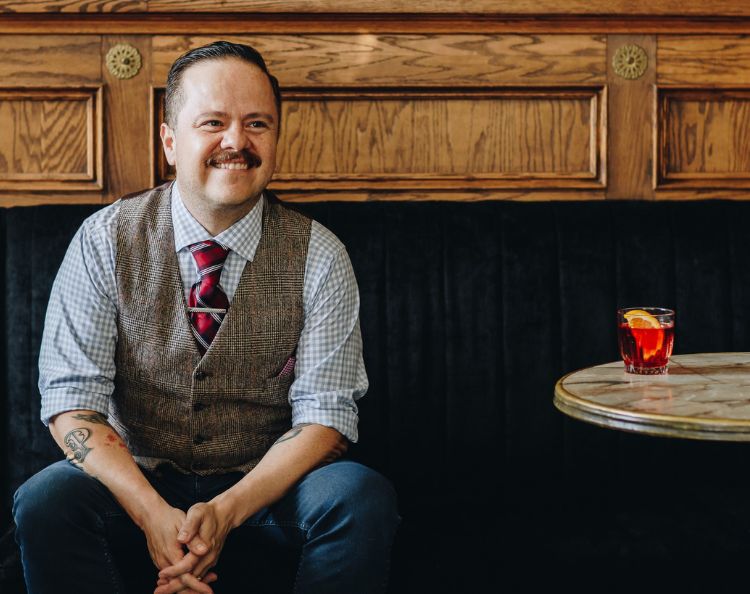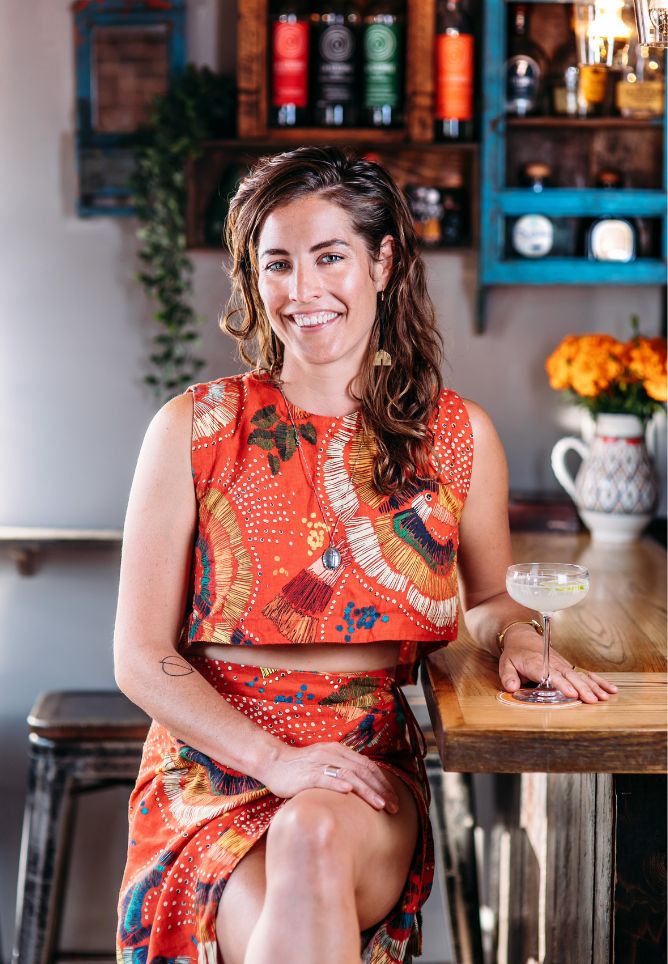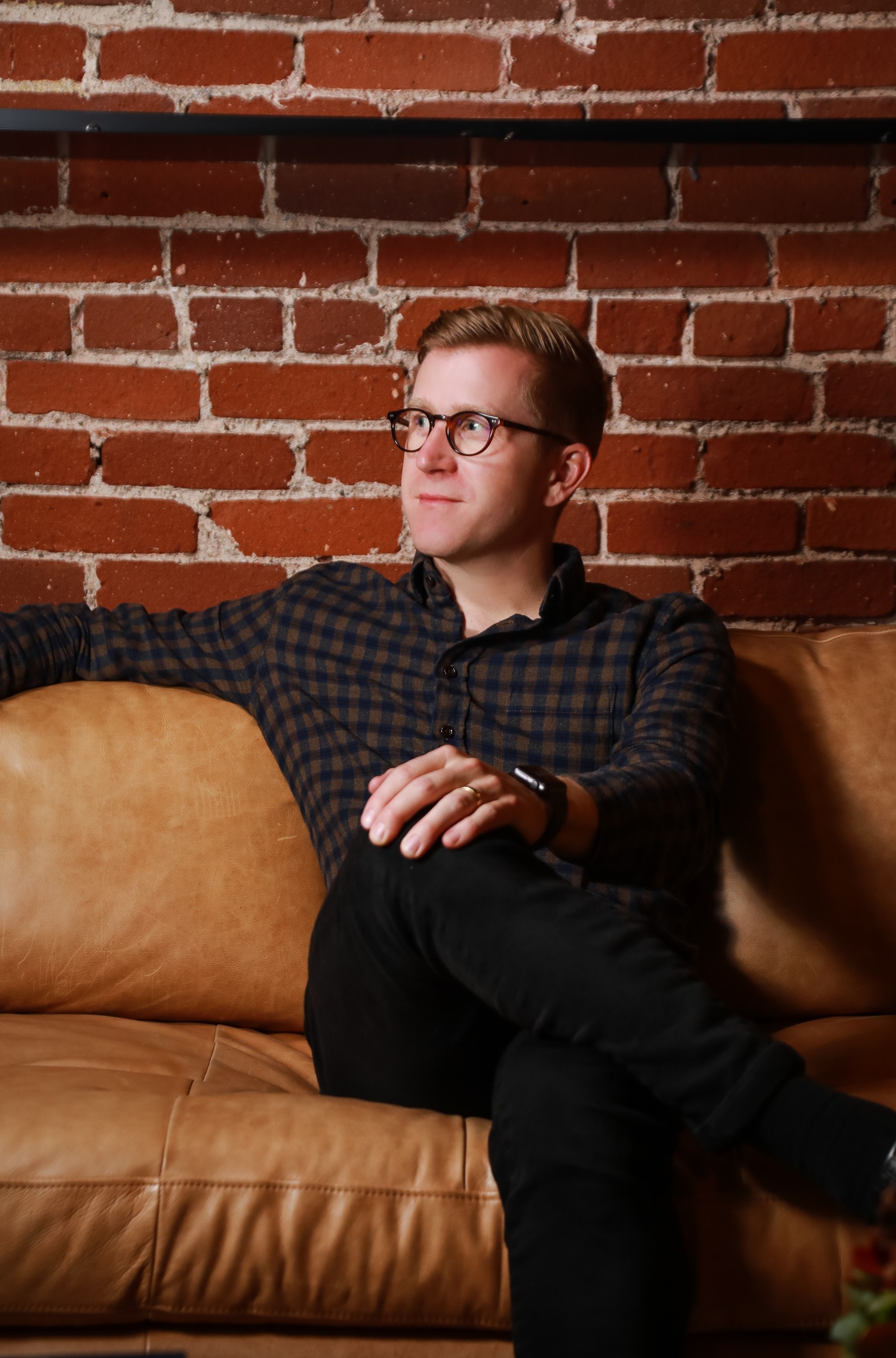Age of Influence
Jim Meehan interviews three experienced bartenders to explore how bartenders today can leverage social media to cultivate authentic relationships online.
06 February 2024 · 9 min read


Success in the bar industry has always been predicated upon excellent communication skills to cultivate community; but when I began bartending in 1995, the conversations I gravitated towards were centered around colleagues and customers. Back then, you built your reputation as a bartender (and the bar’s reputation by extension) by being affable, knowledgeable, curious, and discreet with customers and reliable, hard-working, empathetic and upbeat with your coworkers. Being the life of the party (and a great place to have one) was appreciated by both cohorts.
Bartenders were the industry’s most important promotional figures until 1996, when liquor manufacturers began advertising on cable television and mainstream radio again after nearly sixty years of voluntary silence following prohibition in America.
Until this time, liquor brands and their drinks initiatives were primarily sequestered to trade magazines, so distillers relied upon branded mirrors, neon signs, and point of sale merchandise given away by promotional event staff to build brand awareness. The information age for bartenders and the spirits business began to shift in the early Aughts when chat boards on the fledgling Internet began to connect enthusiasts around the world. This is where the cocktail renaissance began, as figures like Microsoft’s Robert Hess connected budding enthusiasts such as David Wondrich, Gaz Regan and Ted Haigh along with working bartenders like Dale DeGroff and Audrey Saunders. These conversations eventually evolved into blogs by bartenders like Jeffrey Morgenthaler, who shared their findings for readers- both pros and amateurs- to comment on and become familiar with each other. Gradually, the conversations you’d find in chat forums and blogs moved over to a broader audience with more consumers on platforms such as Facebook beginning in 2004, YouTube in 2005, Twitter (now X) in 2006, Instagram in 2010, and TikTok in 2016, with others coming and going along the way.
The transition from insular conversation amongst small expert communities to consumer-facing platforms that combined writing, photographs, audio and video has brought millions of new eyes to the trade, but it’s placed pressure on bartenders to become proficient in new communication mediums to remain part of the conversation.
Ivy Mix, an award-winning bartender whose built a loyal following on social media as an author, co-founder of a charitable bartender competition, and partner in a bar and wine shop in Brooklyn compares,
“the art of hospitality, to me, is like being a conductor of a social symphony. As bartenders, we are frequently in charge of way more than just the drinks. We have to control the ambiance - the music, the lights - and we have to navigate the very different identities within our space. We have to be able to read if someone or a group of people want to be interacted with or left alone. We have to read the room.”

Mix goes on to compare the “room” that bartenders learn to read with her audience on social media.
“Social media is like that, but bigger. What do people want to hear from us and how? I think similarly to bartending, most patrons don’t come in wanting to just discuss the cocktail you’re making, they want to discuss current events, politics, sports or whatever. Social media is no different, in my mind, and it’s best to be eclectic and diverse in your subjects of discussion.”
Alex Day, who built his bona fides as a New York bartender and three time author at a bar that has over 300K followers on Instagram told me he’s,
“thought a lot about why I first fell in love with bartending, and I think it has a lot to do with quelling my social anxiety and, by extension, allowing me to become a better communicator when confronting it head-on.”
For Day, the bar’s Instagram provides
“a forum for questions and response. In that way, we started seeing our social media as not just a promotional tool, but also a place to build community, the same bedrock ambitions at the root of what we try to accomplish in operating bars: connecting people together, sharing ideas, making beautiful things.”

Unlike Mix and Day, Erick Castro, a gregarious, award-winning longtime bartender whose built a devoted following through his podcast has a background in communications.
“I actually got my degree from the San Diego State University School of Journalism. I also got a minor in Political Science with the goal of using both to run political campaigns and coordinate media messaging, so although I only worked on a few campaigns, I learned some crucial lessons in how to communicate effective messaging. And these lessons have served me well in the world of bars and cocktails.“
While all three entered the industry before follower counts were a “thing,” there is no doubt their ongoing success is partly due to their talents navigating the evolving information space. When I asked each of them what the stakes are for today’s bartenders, Mix wondered
“if a bar (or bartender for that matter) can rise to the top of the game without interconnecting to other top bars across the world on social media. Not to mention communicating with patrons the world over to think they know the bar but have actually never been.”
Castro believes
“it is still possible to be influential while voluntarily limiting one’s exposure, but only provided you have already achieved a significant level of notoriety and acclaim. But trying to achieve that today from square one would be particularly difficult, if not next to impossible.” Day suggests that, “without social media, the breadth of (a bartender’s) influence may be less, but it may in fact be deeper and more meaningful than what an audience spread across the world can provide.”

This deeper connection that Day alludes to reminds me of the relationships bartenders cultivated with customers before smartphones became ubiquitous, forcing them to split their time between the people in the room and their followers online. For Day, the responsibility of speaking for a large organization on social media weighs heavily. Still, he
“don’t shy away from politics or cultural topics, and I believe strongly in our business not being afraid of voicing our values, too, but I also believe there’s value in being tactful and kind.”
Ivy is less cautious, confessing
“I have always tried to be genuine on social media, not trying to have an online presence that is different from who I actually am.”
Erick also keeps his social media quite personal, confessing he thinks
“it can be mentally taxing to constantly worry about ‘staying on brand.’ By being a more three-dimensional person, it allows people to relate to you and connect with you on a more profound level.”
Despite his bar’s standout success on social media, Day humbly cautions that
“social media can paint a distorted picture of the success of others and allow us to easily create one of ours. All to say, don’t take it too seriously. Social media is a tool in a kit, and don’t let the projection of the work be more important than the work itself.”
As I reflect upon all three bartenders’ respective success navigating the evolving communication landscape, the throughline between their approaches is authenticity. By focusing on their work first and messaging around it as a secondary “tool” using their everyday voice to amplify it, these influential former bartenders distinguish themselves from today’s “influencers” by focusing their attention on people instead of the venues or platforms where they encounter them.









